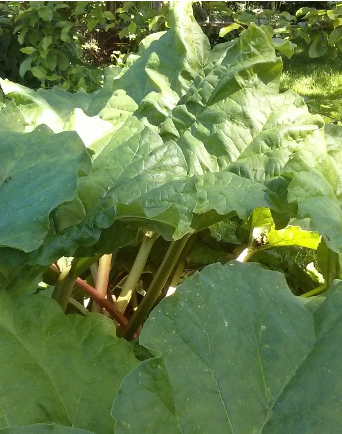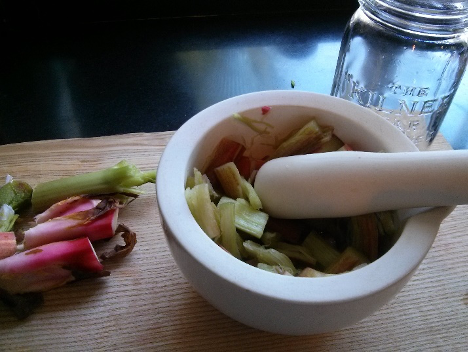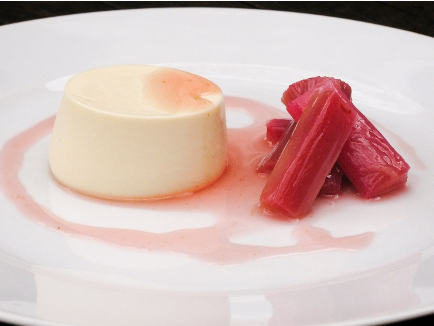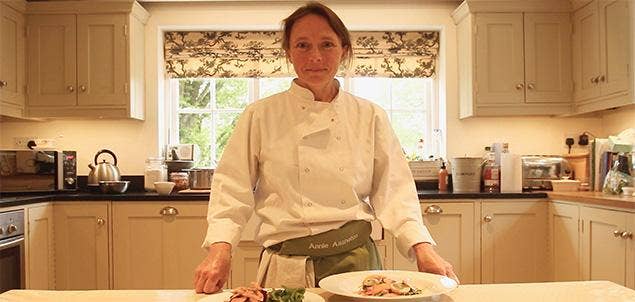I’m sure it’s no exaggeration to say that few of us have lived through a situation like this before. It seems to me that the implications of Covid-19 seem more suited to a dystopian fantasy novel than something I ever expected to live through.
The restrictions imposed on everyone have forced us to change the way we live: how we interact with friends and family, how local communities support themselves, and how we manage our day–to–day lives including cooking and eating.
Anecdotally, it seems that many of us who are lucky enough to have some outside space are embracing our gardens and growing more vegetables than ever.
Making the most of what we have
Similarly, baking seems to have enjoyed a phenomenal rise in popularity and because of the resulting demand for flour our village shop hasn’t seen a bag for weeks. Luckily for me I had a good stock of both plain and bread flour before all this started but it is quite sobering to see those empty shelves.Being able to use what you have and being necessitated to cook from the garden and store cupboard has become more relevant than ever in my lifetime. I have shamelessly used this situation as an excuse to present my family with dishes involving ingredients that are not amongst their favourites with the explanation that other options simply ‘weren’t available‘. For once they really can’t argue.
It has been an excellent way of persuading some of them to try new things and has, by and large, been a big success. Far from feeling restricted I have actually felt quite liberated in my choice of what to cook and I hope that the horizon broadening results will be long lasting.
Rhubarb
 One ingredient that you might well have in abundance in your garden at the moment is rhubarb. As with so many fruits and vegetables many peoples’ feelings towards rhubarb were shaped, and not in a good way, at school. Over cooked and over sweetened, it was too often accompanied by tepid, lumpy custard and conveyed nothing of the tart sharpness which reawakens our senses at the beginning of spring.
One ingredient that you might well have in abundance in your garden at the moment is rhubarb. As with so many fruits and vegetables many peoples’ feelings towards rhubarb were shaped, and not in a good way, at school. Over cooked and over sweetened, it was too often accompanied by tepid, lumpy custard and conveyed nothing of the tart sharpness which reawakens our senses at the beginning of spring.
The forced variety, grown in eerily creaking, candlelit sheds is available from January but for me things really start to get interesting in April with the appearance of the slightly less elegant but altogether more interesting field rhubarb. Even in my vegetable garden which is plagued by too much shade and hungry birds, my rhubarb plants never let me down and I am constantly in search of new recipes to help me use up the plump pink stems and prevent the gargantuan leaves from taking over the vegetable bed.
Rhubarb ketchup
Luckily this vegetable which thinks it’s a fruit is incredibly versatile and can be used just as successfully in savoury as well as the more obvious sweet dishes. My children love ‘rhubarb ketchup‘ with quickly grilled fresh mackerel fillets, its tartness cutting through the oily richness of the fish.The ketchup is made simply by cooking some rhubarb pieces with a sprinkling of sugar or honey (quantities are hopeless here as the amount of sugar needed varies so much) until it is soft enough to blitz with a hand held blender to a completely smooth sauce. With mackerel fillets cooked (skin side up) under a hot grill in 4 minutes this is the ultimate in fast food and yet provides a harmonious dish of vibrant flavours and striking colours which is easily sophisticated enough to give to friends (when they are allowed round) as a starter or light lunch with some salad leaves and fresh bread.
Rhubarb is also a wonderful accompaniment to meat, particularly duck and pork. Slices of smoked duck go beautifully with rhubarb chutney and can be paired in canapés with small, lightly poached cubes of rhubarb.
Rhubarb vodka
Something a bit different I am working on now, and which will hopefully appeal even to non-rhubarb lovers, is rhubarb vodka. As ever, my research has uncovered many different recipes and not being able to decide between the relative benefits of the quick fix option and a more thorough version I am conducting a not very scientific experiment to see whether or not it is worth going the extra mile.My simple option combines 1 stick of rhubarb with 100g caster sugar and 200ml vodka in a Kilner jar. I have shaken it all up together to dissolve the sugar and will leave it for 3 weeks, shaking daily, before straining and bottling.
 The slightly (and really only very slightly) more involved option is to pound the same quantity of rhubarb in a pestle and mortar before combining it with the caster sugar in another jar. This will be left to macerate for 2 days after which I will add the vodka and again leave for 3 weeks before straining. Some recipes recommend leaving the brew for another 3 months before tasting but in the interests of science it would only be right to have a small sip of each straight away so that I can decide which option to replicate with whatever rhubarb is left in my garden. I shall report back with the results...
The slightly (and really only very slightly) more involved option is to pound the same quantity of rhubarb in a pestle and mortar before combining it with the caster sugar in another jar. This will be left to macerate for 2 days after which I will add the vodka and again leave for 3 weeks before straining. Some recipes recommend leaving the brew for another 3 months before tasting but in the interests of science it would only be right to have a small sip of each straight away so that I can decide which option to replicate with whatever rhubarb is left in my garden. I shall report back with the results...
Poaching rhubarb
Having mentioned poached rhubarb above, it would be worth touching on poaching methods. This is something I experimented with extensively before appearing on the BBC’s MasterChef a few years ago. I wanted to use rhubarb cooked in ginger wine and honey as an accompaniment to honey pannacotta but there were so many conflicting methods and nothing seemed to give the perfect result I was searching for. Baking resulted in the top halves of the pieces drying up but the rest being soggy and when poaching in a more conventional fashion I tended to end up with the pieces falling apart at the edges by the time they were cooked in the middle. I wanted my rhubarb segments to be perfectly cooked all the way through but still, crucially, holding their shape so that they would sit prettily on the plate and have a more enjoyable texture.
I wanted to use rhubarb cooked in ginger wine and honey as an accompaniment to honey pannacotta but there were so many conflicting methods and nothing seemed to give the perfect result I was searching for. Baking resulted in the top halves of the pieces drying up but the rest being soggy and when poaching in a more conventional fashion I tended to end up with the pieces falling apart at the edges by the time they were cooked in the middle. I wanted my rhubarb segments to be perfectly cooked all the way through but still, crucially, holding their shape so that they would sit prettily on the plate and have a more enjoyable texture.
Eventually I hit upon what I now consider to be the ultimate poaching method: combine 200ml ginger beer and a squeeze of honey in a pan bring up to a simmer. Add 250g rhubarb cut into equal length segments, simmer for 2 minutes and then take off the heat and leave for 10 minutes with a lid on. Remove the rhubarb with a slotted spoon and rather than waste the delicious poaching liquor boil it down for a few minutes until it becomes syrupy and the flavours have intensified. You could of course substitute the ginger and honey mixture for whichever poaching liquid you like, including a simple stock syrup perhaps spiked with a split vanilla pod.
Of course there is a myriad of other ways in which you can use rhubarb in puddings. It has a wonderful affinity with dairy and is delicious in fools, custards, creams and curds. I have already mentioned both ginger and honey as flavours with which rhubarb goes particularly well but there are many others besides; orange, strawberry, apple and elderflower to name but a few.
One of my favourite and most versatile recipes is a rhubarb and ginger crumble cake. It holds together well enough to enjoy as a tea time treat but the addition of some orange scented mascarpone or perhaps some caramelised oranges (or both) would instantly transform it into a delicious pudding. The cake will keep well in an airtight tin for several days, if you can resist it for that long. Of course, it does depend on having some flour in your cupboard and if you only have plain rather than self-raising it can easily be transformed with the addition of some baking powder.
Rhubarb and ginger crumble cake recipe with orange mascarpone cream
Ingredients
For the cake mix 3oz soft butter 3oz caster sugar (vanilla if possible) 2 eggs 3oz self raising flour 1 tsp bicarbonate of soda ½ tsp ground gingerFor the rhubarb 1lb rhubarb 1tbsp runny honey Squeeze orange juice
For the crumble topping 1oz caster sugar 2oz butter 2½oz plain flour ½oz ground or flaked almonds 1oz demerara sugar
For the orange mascarpone cream 250g mascarpone 2 tbsp icing sugar Zest and juice 1 orange
Method
- Pre heat the oven to 180°C
- First make the crumble mix by combining all the ingredients apart from the demerara sugar in a food processor and blitzing until it forms crumbs.
- Using an electric whisk or mixer, cream together the butter and sugar until pale and very soft. Whisk in the eggs, one at a time and then the flour, bicarb and ginger. Grease an 8” round cake tin (or use a liner) and scrape in the cake mix.
- Stir the rhubarb together with the honey and orange juice and spread evenly over the cake mix, then top with the crumble mix and finally the demerara sugar.
- Put in the oven for approx. 50 minutes until golden brown and a skewer comes out clean(ish). Turn out onto a cooling rack.
- Make the mascarpone cream by combining all the ingredients then chill until needed.
- For pudding serve the cake still warm with the cream or enjoy it cold for tea (or anytime!)
2020-04-22 14:50:00
75 view(s) 


